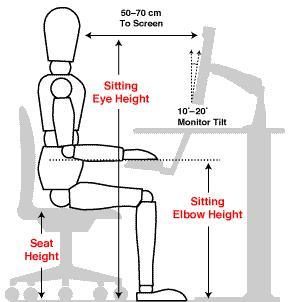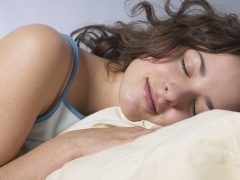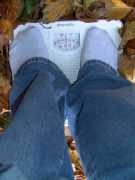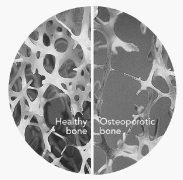PHYSIOTHERAPY
This approach to treating back and pelvic pain, sciatica and groin pain uses postural physiotherapy with a method developed at Posturepro Physiotherapy Adelaide called the SOAZ Method.
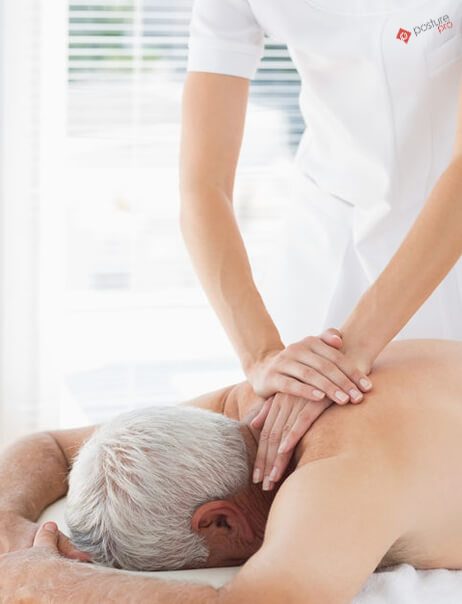
OUR PHYSIOTHERAPISTS TREAT YOUR PAIN
At Posturepro we take an approach to physiotherapy called the New Movement method. This method aims to address the original source of pain.
Unlike traditional physio approaches that tend to target the symptoms (the pain).
Our over-riding principle is to resolve your PAIN and restrictions in your body – where the problem starts. We do a Full Body Assessment recording all restricted movement and alignment distortions including your leg length.
One of the guiding principles is to not treat your symptoms which is where your pain and discomfort are felt.
When your body moves well its like a car with great alignment – or a house with strong foundations.
What Is Physiotherapy?
Physiotherapy is a clinical health science and profession which aims to improve movement and strengthen the body and resolve pain and discomfort: enabling better quality of life and ability to function without pain.
Physiotherapists use their expertise in anatomy and physiology to assess and treat clients with a variety of health conditions including
What Can Physiotherapy Treat?
- Back pain
- Neck and Headache
- Hip and Knee pain
- Groin pain
- Shoulder pain
- Women’s health
- Workcover injuries
- Posture and Movement
- Whiplash
- Plantar Fascitis
- Ankle sprains
What Methods do we use to treat?
- Muscle Energy Techniques
- Acupuncture
- Manual Hands on techniques
- Massage
- Neural techniques
- Prescription exercise
We use objective assessments to develop an evidence based treatment programme tailored to individual clients.
All Physiotherapists in Australia hold a university degree in Physiotherapy and must be registered by law with the Australian Health Practitioner Registration Agency (AHPRA).
Is Physiotherapy For Me?
We tailor our physiotherapy approach to each client. Many clients choose Physiotherapy for back pain, to assist with postural alignment, for sporting injuries, for rehabilitation post surgery or for prevention of injury. We have extensive experience with treating children, teenagers and seniors.
What Happens In My First Physiotherapy Session?
Posturepro Physiotherapy Adelaide do a full body assessment.
Why? Because without knowing what your body is able to do and the movement and restrictions it has now, How can we prove that we have made any changes to your body after treating?
Just treating where the pain is felt is like fixing up the cracks in the wall and not correcting the foundations of the house.
We achieve:
- Amazing Movement changes and Alignment correction FAST!
- Prevent future ongoing episodes of the symptomatic area
- When the body moves well and the discomfort decreases, your vitality and energy increase, that then enables increased strength and postural integrity.
What Do I Wear To My Physiotherapy Appointment?
For your best comfort and to enable the physiotherapist to get the most accurate assessment please wear loose and stretchy clothing to your appointment.
If you are coming from work, then just bring something to change into when you arrive at the clinic.
Claim your health insurance rebate. We have EFTPOS and hicaps facilities on site which allows you to claim your appointment fee on the spot and only pay the gap.
HEALTH TIPS
Your workstation should be set up to cause the least amount of stress on your body. Prolonged hours of poor posture or repetitive work habits, often in a stressful environment can result in significant overuse injury. Applying the following points can help to minimise such injuries.
Important points to note :
- Sit in front of your workstation such that your monitor is directly front on.
- Your arms should be at right angles from your shoulders when you type.
- Your wrists should be in line with your forearms, both horizontally and vertically.
- Your keyboard should be flat.
- The top of your monitor should be level with your eyes.
- Do not sit too close to your monitor – at least an arms length away.
- Ensure your seat is properly adjusted.
- If your feet don’t reach the ground, use a foot rest.
- Do not reach too far for your mouse, keep it close to your keyboard and support your arm on the desk when using your mouse.
- Use a document holder attached to the side of the monitor.
- Take regular breaks every hour, stretch your legs and perform simple mobility exercises to limber.
Suggestions For The Application Of Ice And Heat
Ice is an effective and natural pain killer and anti-inflammatory. Ice should be applied over the inflamed area in the acute or early stages of your problem.
Whenever you experience swelling, redness or sharp / stabbing pain it is generally considered best to apply ice. Repeat until symptoms ease – usually for 24 – 48 hours. Following this you should alternate with ice and heat. If in doubt, contact your Physiotherapist.
APPLICATION
Place ice cubes in a plastic bag or use a professionally prepared ice pack.
Place a damp face washer or tea towel over the problem area then place the ice pack on the material covering.
The first application should be as follows:-
- 10 minutes on
- 10 minutes off
- 10 minutes on
- 10 minutes off
- 10 minutes on
- Then during waking hours, apply the ice pack every 2 hours, or as indicated by your Physiotherapist.
As the inflammation reduces, it is often beneficial to apply heat between ice.
- 10 minutes on ICE
- 10 minutes on HEAT
- 10 minutes on ICE
- 10 minutes on HEAT
- 10 minutes on ICE
- 10 minutes on HEAT
Heat is an effective therapy for reducing muscular tension and pain and is best used AFTER the initial inflammation has subsided.
N.B. If you do not have ice immediately available, then use a pack of frozen peas or similar item.
Contoured Pillows
The most common cause of neck pain (and disturbed nights), is “prolonged abnormal posture during sleep”. A soft filled pillow that quickly loses its shape fails to offer the level of support required to relax the heads support system of neck muscles and ligaments. Instead, these structures are left unsupported and cause neck strain.
Maintaining good spinal posture, especially when sleeping, is one key ingredient to ensuring good spinal health.
Contoured pillows are specially shaped to provide support for the neck and head whilst sleeping. This is particularly important when having Physiotherapy as it helps to support your care and enhance recovery.
Common symptoms due to a poor quality pillow include:
headaches/migraine, neck pain, grinding noises on movement, pins and needles and numbness or pain in the arms and/or fingers
Advice for a goods nights sleep on your new pillow
- Like a new pair of shoes, your new pillow needs to be worn in.
- Use your pillow at the beginning of each night.
- If you experience any discomfort, change to your old pillow.
- Continue to do this until your neck posture alters enough allowing continual use – in some cases this can take up to 2 weeks.Click here to go back to Health Tips.
Your dietary intake and eating habits offers one of the most influential means of determining how you feel and perform on a daily basis.
By following some basic dietary principles, not only can you feel and function better, but you can also significantly increase your ability to fight and resist disease.
Another Diet ?
Diets come and go. Some are good and some are downright terrible. My best advice is that if you can sustain the diet on a long term basis and it incorporates sensible principles (like the ones below) – it is most likely OK.
Healthy diets for all Australians
- General guidelines we can all follow :
- FRESH IS BEST ! Always attempt to eat your food as close to its natural state as possible for maximum nutritional content
- Throughout each day, drink 1.5 litres of water – avoid energy, fizzy and sport drinks – they are full of sugar!
- Eat a wide variety of nutritious foods
- Breads and cereals (particularly wholegrain), vegetables, legumes (such as chickpeas) and fruit
- Drink coffee and tea in moderation – no more than 2-3 cups per day
Alternatively, switch to decaf or caffeine free drinks such as herbal tea that have positive effects on health - Drink alcohol in moderation – for adults only
- Limit wherever possible the intake of refined sugars (carbohydrates)
Refined sugars are found in junk-food, soft drinks, etc. - Australians have low intake of omega fatty acids
Aim to eat fish twice per week - Limit saturated fat intake (processed foods, fried foods, animal fat)
- Consume low salt foods and avoid adding salt to your food
- A good balance between exercise and food intake is important; this helps to maintain a healthy body weight.
- Exercising such as walking, swimming, riding etc. for 20 minutes per day, 3 days per week will make a huge difference to your energy levels and immune function. MAKE THE START – it will become a habit before you know it !
How Much?
The volume you eat at a meal is essential too. Eat smaller meals, regularly spaced throughout the day when you are hungry. Overeating can slow you down, make you feel drowsy and force your body to stack on unnecessary weight.
Plan a better diet today, for a healthier tomorrow!
What is good posture?
Posture is the position in which you hold your body upright against gravity while standing, sitting or laying down. Good posture helps to minimise the amount of strain imposed on our muscles, joints and ligaments whilst performing our daily activities.
Proper posture:
- Minimises muscle strain by keeping bones and joints in optimal alignment.
- Decreases the abnormal wearing of joint surfaces caused by overload and overstrain.
- Minimises ligamentous strain on the joints of the spine and posture loaded joints.
- Minimises fatigue due to more efficient use of muscles, allowing the body to use less energy.
- Helps prevents backache and muscular pain.
- Contributes to a more positive and assertive appearance.
Proper posture requirements:
Good muscle and joint flexibility
Strong postural muscles
Balanced muscle tone on both sides of the spine
An understanding of what constitutes good posture which leads to conscious correction.
With practice, the correct posture for standing, sitting, and lying down will gradually replace your old posture.
What is the correct way to stand?
Most people when asked to stand with good posture immediately stand tall, arching their spine and pulling their shoulders back. It looks uncomfortable and is a far cry from a healthy standing posture. Keep it simple – try using PUPPET POSTURE !
Puppet posture is a term I have used to simplify the process of assuming correct posture. It works especially well with children as they can identify easily.
Imagine that you are a puppet (well try to at least!) with a string coming out of the top of your head. Gently lift the imaginary string upwards to straighten your spine. Your arms and shoulders will assume the best posture they can for your current spinal function. Watch yourself in the mirror to visualise what you are achieving. Practice regularly, it gets easier as your spine and muscles gain strength.
Sleeping Posture
Sleep on your back or side only. Do not sleep on your stomach as this often causes lower back and neck strain. Use a quality contoured pillow that provides adequate support to your head and neck while sleeping.
When arising from bed, move to the side of the bed and push yourself up sideways while swinging your legs off the side.
When your back is painful you may place a pillow under your knees (when on your back) or between your knees (when on your side).
What is osteoporosis?
Osteoporosis is a disease in which the bones become fragile and brittle. They fracture more easily than normal bone. Even a minor bump or fall can cause a serious fracture. Half of all women and one-third of men over 60 in Australia will have a fracture due to osteoporosis.
Osteoporosis and fractures are major causes of injury, long-term disability and even death in older Australians. One fifth of people who suffer a hip fracture will die within six months. Of those who do not die, 50 per cent will be unable to walk without help or stay in their own homes. Some may even need full-time nursing care.
Osteoporosis is often called a silent disease, as there are usually no signs or symptoms until someone has a fracture. Any bone can be affected but the most common are bones in the hip, spine, wrist, ribs, pelvis and upper arm.
What causes osteoporosis?
- The health of your bones depends on:
- your genes (60-80%)
- the level of hormones in your body. In women this hormone is oestrogen; in men it is the hormone testosterone.
- how physically active you are
- what you eat
These things affect how well bones form in early adulthood when your bones are at their strongest. After the 30s, it is important to maintain bone strength and prevent bone loss.
Menopause and osteoporosis
Menopause means the time around which a woman has her last period. Most Australian women reach menopause between the ages of 45-55, but it can happen earlier.
From about the age of 45 years, women may begin to lose bone at the rate of about 1-2% per year. This is because womens bodies usually make less oestrogen at this age. After menopause, oestrogen levels keep decreasing, and this speeds up bone loss to about 2-4% per year, especially in the first 5-10 years after menopause. This stage of bone loss caused by menopause may last up to 15-20 years. All women lose bone at menopause. The amount varies, but some can lose as much as 30% of their bone during those years. If you have an early menopause for some reason, you will begin to lose bone at an earlier age.
Men and osteoporosis
The male hormone, testosterone, does not decrease suddenly like oestrogen does in women during menopause. Instead, testosterone gradually decreases from about 50 years of age in men. However, mens bone density tends to stay the same until they are much older. But after 75 years of age, both men and women lose more bone, especially in the hip. This is part of the ageing process.
Risk factors for osteoporosis
Risk factors for osteoporosis and fractures caused by osteoporosis are similar in women and men. They include some things that you can change, and some that you can not.
Risk factors you can change
- You have a higher risk of having a fracture due to osteoporosis if you:
- Do little or no physical activity
- Are a smoker
- Have a high alcohol intake
- Have low body weight
- Have low calcium intake
- Frequently fall
Risk factors you can not change
- You have a higher risk of having a fracture due to osteoporosis if you:
- Have a parent or grandparent who has osteoporosis or who has had a fracture caused by osteoporosis.
- Are female
- Are Caucasian or Asian
- Have a small body build
- Had delayed puberty or early onset of menopause
- Had anorexia which caused loss of periods
- Have already had a fracture caused by osteoporosis
- Are over 60 years of age
- Have rheumatoid arthritis, chronic liver disease or kidney failure
- Have a history of over-active thyroid or parathyroid glands, or have been treated with thyroid hormones in the past
- Are a male with low levels of testosterone
- Have had long-term drug treatment with corticosteroids (such as prednisone)
Preventing osteoporosis – reduce your risk
Preventing osteoporosis is important. Although there are treatments for osteoporosis, there is no cure. You can reduce your risk of developing osteoporosis and having a fracture by:
- Having a balanced diet rich in calcium and vitamin D. For most people, three serves of dairy foods daily will provide enough calcium
- Vitamin D to help the body absorb calcium. Vitamin D is in small amounts in foods such as dairy products fortified with vitamin D, egg yolks, salt water fish and margarine. The best source of vitamin D is from safe sunlight exposure.
- Weight-bearing, high impact and strengthening exercises (such as walking, tennis, dancing and weight training)
- Having a bone density test, if appropriate
- Asking your doctor if you need medication
- Asking your doctor if any medicines you take may be causing bone loss
- Not smoking
- Drinking less alcohol
What is Arthritis ?
Arthritis is a major cause of disability and handicap in Australia affecting people of all ages and walks of life. Arthritis is not a single condition. There are over 150 kinds of arthritis, all of which affect one or more joints in the body. The most common types of arthritis are osteoarthritis (OA), rheumatoid arthritis (RA), fibromyalgia, lupus and gout, which account for 90% of all arthritis cases.
Arthritis is often misinterpreted as simply a disease which affects elderly people, when in fact 60% of those who are diagnosed with arthritis are between the ages of 15 – 60 years. One in one thousand children are also diagnosed with juvenile arthritis, while it is estimated that three in every thousand children live with the condition but remain undiagnosed.
The word arthritis comes from Greek: arth- = joint and –itis = inflammation. So, arthritis literally means inflammation of the joint.
How Common is Athritis?
Arthritis affects 3.4 million Australians, 16.7% of the population. Of the proportion of Australians affected, 60.4% are women. 60% of all people living with arthritis are of working age.
What Causes Arthritis?
There is no one single cause or list of causes for arthritis. This is due to the fact that there are over 150 different types of arthritis, and often several factors contribute to an individual developing this common problem.
Different Types of Arthritis
The disease also can affect other parts of the body. Arthritis causes pain, loss of movement and sometimes swelling. Some types of arthritis are:
Osteoarthritis, a degenerative joint disease in which the cartilage that covers the ends of bones in the joint deteriorates, causing pain and loss of movement as bone begins to rub against bone. It is the most prevalent form of arthritis.
Rheumatoid arthritis, an autoimmune disease in which the joint lining becomes inflamed as part of the bodys immune system activity. Rheumatoid arthritis is one of the most serious and disabling types, affecting mostly women.
Gout, which affects mostly men. It is usually the result of a defect in body chemistry. This painful condition most often attacks small joints, especially the big toe. Fortunately, gout almost always can be completely controlled with medication and changes in diet.
Ankylosing spondylitis, a type of arthritis that affects the spine. As a result of inflammation, the bones of the spine grow together.
Juvenile arthritis, a general term for all types of arthritis that occur in children. Children may develop juvenile rheumatoid arthritis or childhood forms of lupus, ankylosing spondylitis or other types of arthritis.
Systemic lupus erythematosus (lupus), a serious disorder that can inflame and damage joints and other connective tissues throughout the body.
Scleroderma, a disease of the bodys connective tissue that causes a thickening and hardening of the skin.
Fibromyalgia, in which widespread pain affects the muscles and attachments to the bone. It affects mostly women.
Preventing Arthritis
As the specific causes of the different types of arthritis remains unclear, it is difficult to say what may assist in the prevention of the development of arthritis. However, listed below are a few steps which may be beneficial in reducing the effects of arthritis.
- Maintain appropriate weight.
- Protect joints from injuries and overuse.
- Regularly exercise to maintain healthy bones, muscles and joints. Obviously, regular Physiotherapy care is of benefit too, ensuring optimal spinal/joint range of movement and flexibility.
- Eat a healthy diet as nutrients are vital for joint health.
- Hydrate your body. Water makes up 70 percent of the cartilage in joints and plays a major role in the lubrication and shock absorbing properties of healthy joints.
Correct Lifting
Lifting injuries are a common cause of back pain. You can protect yourself against damage with good lifting habits, both at home and in the workplace.
How Lifting Can Injure Your Spine
When you lift, your spine is put under stress. Twisting or jerking while lifting and carrying can injure the small joints of the spine. The discs which separate the vertebrae (spinal bones) and the ligaments which hold the vertebrae together are also at risk. The discs are composed of a jelly-like core, surrounded by a strong fibrous ring. With repeated unsafe lifting, the fibrous ring or its supporting ligaments may tear or rupture. This is commonly known as a disc bulge or herniation.
Lifting while bent forward will increase the stress on your spine. Contributing to this stress are factors like the weight of the load, how far it is held from your body, how often and how fast you lift and how long you hold the load.
- To protect your spine from injury, always attempt to take the following steps:
- Get a firm footing with your feet apart for a stable base.
- Bend your hips and knees instead of bending at the waist. This allows the leg muscles to take the load and not the spine.
- Tighten your abdominal muscles. Abdominal muscles support the spine when lifting.
- Ensure that you have a strong grip and that the load is as close to you as possible.
- The closer it is to your spine the less force it exerts on your back.
- Brace yourself for the lift but continue to breathe normally through the lift.
- Lift steadily and do not jerk the load. Look straight ahead, not down.
- Keep your back straight and avoid twisting or bending to the side.
- To lower the object, place your feet as you did to lift, tighten stomach muscles and bend your hips and knees.
Optimal Chair Setup
Correct seating posture is an essential ingredient to preventing spinal injury and fatigue.
The basic features of a good chair are :
- height adjustable
- pelvic tilt on seat
- lumbar support
- Adjust the height of your chair such that your knees are level or just below hip height and that your feet are flat on the floor.
- If your seat has a pelvic tilt, this should be set to a slight forward incline to promote a natural inward lower back curve.
- Move the lumbar support so that it fits snuggly into the curve of your lower back. This will help to prevent lumbar strain and helps to maintain a straight spine and neck whilst seated.
- Never sit with your legs crossed! Crossing at the ankles is a preferable alternative.


